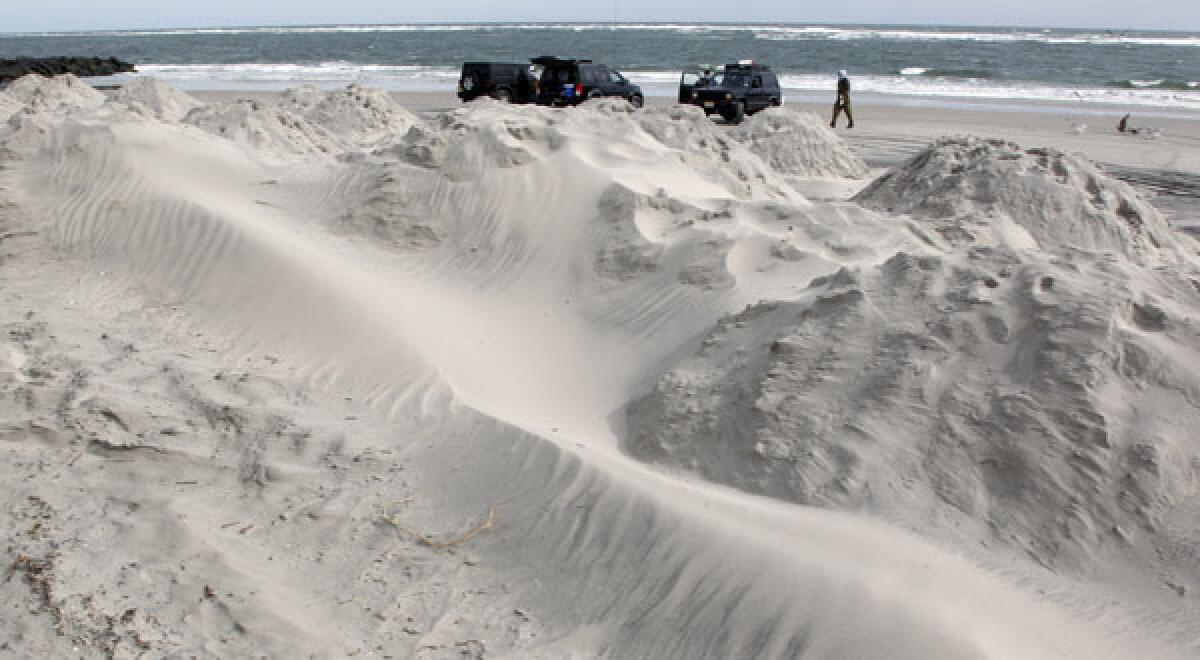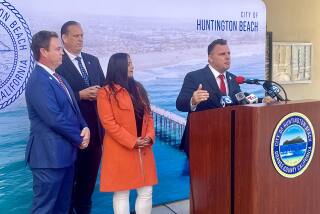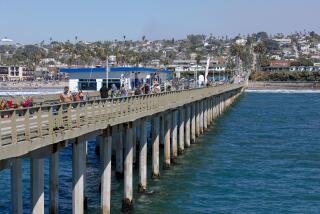Shore protection: Sandy leaves congressional debate in its wake

- Share via
WASHINGTON -- Sandy has moved on, but it’s about to leave behind a new debate in Congress over federal funding for shore protection projects.
Maryland Gov. Martin O’Malley said Tuesday that during a discussion of the storm, one official mentioned, “Every dollar that we invested in beach replenishment paid off by protecting Ocean City from the waves there.”
Ocean City’s experience and those of other coastal towns in withstanding more serious damage are expected to put the spotlight on the hotly debated issue in Congress over taxpayer funding for pumping sand onto beaches.
STATE BY STATE: Snow piles up; beaches wash away
Budget hawks have repeatedly sought to cut the roughly $100-million-a-year program, contending that Uncle Sam can no longer afford to pump sand on beaches that are doomed to erode again and again.
But officials in Avalon, N.J., and Ocean City, Md., say their experiences with the storm prove the worth of the program.
“We have an extensive dune system that we’ve built up. That dune system did not breach in this storm,” said Avalon emergency manager Harry DeButts. “And this is the highest wave action I’ve ever seen.”
VIDEOS: East Coast hit by deadly storm
Ocean City Mayor Rick Meehan said that damage to his town would have been far greater if not for the sand replenishment program. He said the roughly $125 million spent on shore protection after Hurricane Gloria in 1985 has saved “more than twice that amount in property damage.”
“During Hurricane Gloria, we lost the entire boardwalk, and we had significant damage to ocean properties,” he said. “During this storm, we had no damage to the boardwalk, and probably just minimal, if any, damage along the oceanfront.” A fishing pier was damaged.
Like other supporters of the program, Meehan noted the shore protection program has been critical to the economic well-being of beach communities.
“It’s the kind of thing that’s looked at as frivolous for rich people, but when you get hit by a storm, you’re going to find out you get far more back in saved damages than you get in the cost of the replenishment,” said Howard Marlowe, a Washington lobbyist who represents coastal communities.
ALSO:
Storm hits Maryland with everything -- waves, wind, snow
Teenage suspect in Jessica Ridgeway slaying charged as adult
After near-death experience, woman heads to ‘Let’s Make a Deal’
More to Read
Sign up for Essential California
The most important California stories and recommendations in your inbox every morning.
You may occasionally receive promotional content from the Los Angeles Times.











